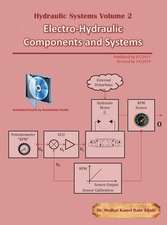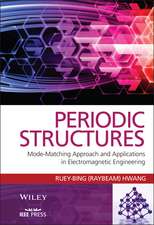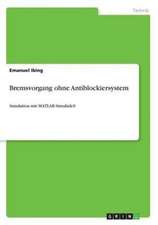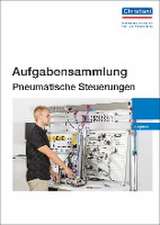Aircraft Control Allocation: Aerospace Series
Autor W Durhamen Limba Engleză Hardback – 12 ian 2017
Din seria Aerospace Series
- 5%
 Preț: 512.54 lei
Preț: 512.54 lei - 24%
 Preț: 652.63 lei
Preț: 652.63 lei - 20%
 Preț: 517.10 lei
Preț: 517.10 lei - 24%
 Preț: 630.69 lei
Preț: 630.69 lei - 18%
 Preț: 935.27 lei
Preț: 935.27 lei - 20%
 Preț: 440.40 lei
Preț: 440.40 lei - 11%
 Preț: 593.41 lei
Preț: 593.41 lei - 24%
 Preț: 522.32 lei
Preț: 522.32 lei - 24%
 Preț: 545.45 lei
Preț: 545.45 lei - 24%
 Preț: 631.10 lei
Preț: 631.10 lei - 24%
 Preț: 688.22 lei
Preț: 688.22 lei - 24%
 Preț: 724.91 lei
Preț: 724.91 lei - 14%
 Preț: 704.57 lei
Preț: 704.57 lei - 24%
 Preț: 560.70 lei
Preț: 560.70 lei - 19%
 Preț: 522.86 lei
Preț: 522.86 lei - 24%
 Preț: 626.73 lei
Preț: 626.73 lei - 20%
 Preț: 402.13 lei
Preț: 402.13 lei - 23%
 Preț: 593.66 lei
Preț: 593.66 lei - 27%
 Preț: 793.65 lei
Preț: 793.65 lei - 9%
 Preț: 734.90 lei
Preț: 734.90 lei - 27%
 Preț: 733.55 lei
Preț: 733.55 lei - 9%
 Preț: 828.21 lei
Preț: 828.21 lei - 9%
 Preț: 893.99 lei
Preț: 893.99 lei - 9%
 Preț: 743.00 lei
Preț: 743.00 lei - 27%
 Preț: 805.21 lei
Preț: 805.21 lei - 27%
 Preț: 915.52 lei
Preț: 915.52 lei - 27%
 Preț: 759.56 lei
Preț: 759.56 lei - 9%
 Preț: 805.96 lei
Preț: 805.96 lei - 8%
 Preț: 659.96 lei
Preț: 659.96 lei - 8%
 Preț: 670.78 lei
Preț: 670.78 lei - 9%
 Preț: 873.98 lei
Preț: 873.98 lei - 8%
 Preț: 657.96 lei
Preț: 657.96 lei - 9%
 Preț: 1005.60 lei
Preț: 1005.60 lei - 9%
 Preț: 822.75 lei
Preț: 822.75 lei - 8%
 Preț: 603.02 lei
Preț: 603.02 lei - 8%
 Preț: 700.09 lei
Preț: 700.09 lei - 9%
 Preț: 888.67 lei
Preț: 888.67 lei - 9%
 Preț: 717.39 lei
Preț: 717.39 lei - 9%
 Preț: 1455.39 lei
Preț: 1455.39 lei - 9%
 Preț: 782.69 lei
Preț: 782.69 lei - 27%
 Preț: 1003.10 lei
Preț: 1003.10 lei - 8%
 Preț: 660.21 lei
Preț: 660.21 lei - 8%
 Preț: 612.20 lei
Preț: 612.20 lei - 9%
 Preț: 714.00 lei
Preț: 714.00 lei - 8%
 Preț: 544.16 lei
Preț: 544.16 lei - 9%
 Preț: 789.72 lei
Preț: 789.72 lei - 31%
 Preț: 952.13 lei
Preț: 952.13 lei - 31%
 Preț: 572.59 lei
Preț: 572.59 lei - 31%
 Preț: 586.26 lei
Preț: 586.26 lei
Preț: 840.17 lei
Preț vechi: 923.27 lei
-9% Nou
Puncte Express: 1260
Preț estimativ în valută:
160.82€ • 174.74$ • 135.17£
160.82€ • 174.74$ • 135.17£
Carte tipărită la comandă
Livrare economică 22 aprilie-06 mai
Preluare comenzi: 021 569.72.76
Specificații
ISBN-13: 9781118827796
ISBN-10: 1118827791
Pagini: 312
Dimensiuni: 172 x 252 x 20 mm
Greutate: 0.64 kg
Editura: Wiley
Seria Aerospace Series
Locul publicării:Chichester, United Kingdom
ISBN-10: 1118827791
Pagini: 312
Dimensiuni: 172 x 252 x 20 mm
Greutate: 0.64 kg
Editura: Wiley
Seria Aerospace Series
Locul publicării:Chichester, United Kingdom
Public țintă
Primary: Researchers and practitioners working in aircraft control. Graduate students in aerospace engineering.Secondary: Control engineers in other engineering disciplines.
Cuprins
Dedication xiii Series Preface xv Glossary xvii About the Companion Website xxiii 1 Introduction 1 1.1 Redundant Control Effectors 1 1.2 Overview 3 References 5 2 Aircraft Control 6 2.1 Flight Dynamics 6 2.1.1 Equations of Motion 6 2.1.2 Linearized Equations of Motion 10 2.2 Control 12 2.2.1 General 12 2.2.2 Aircraft Control Effectors 13 2.2.3 Aircraft Control Inceptors 17 2.3 Afterword 18 References 19 3 Control Laws 20 3.1 Flying Qualities 20 3.1.1 Requirements 21 3.1.2 Control Law Design to Satisfy Flying Qualities Requirements 21 3.2 Dynamic-inversion Control Laws 21 3.2.1 Basics 21 3.2.2 Types of Equations 22 3.2.3 The Controlled Equations 23 3.2.4 The Kinematic and Complementary Equations 25 3.3 Model-following Control Laws 27 3.4 'Conventional' Control Laws 27 3.5 Afterword 28 References 29 4 The Problem 30 4.1 Control Effectiveness 30 4.2 Constraints 31 4.3 Control Allocation 31 4.3.1 The Control Allocation Problem 32 4.4 Afterword 32 References 33 5 The Geometry of Control Allocation 34 5.1 Admissible Controls 34 5.1.1 General 34 5.1.2 Objects 34 5.1.3 Intersection and Union 37 5.1.4 Convex Hull 39 5.2 Attainable Moments 39 5.3 The Two-moment Problem 43 5.3.1 Area Calculations 48 5.4 The Three-moment Problem 49 5.4.1 Determination of Phi3 49 5.4.2 Volume Calculations 56 5.5 Significance of the Maximum Set 58 5.5.1 As a Standard of Comparison of Different Methods 59 5.5.2 Maneuver Requirements 60 5.5.3 Control Failure Reconfiguration 62 5.6 Afterword 62 References 64 6 Solutions 65 6.1 On-line vs. Off-line Solutions 65 6.1.1 On-line Solutions 65 6.1.2 Off-line Solutions 65 6.2 Optimal vs. Non-optimal Solutions 66 6.2.1 Maximum Capabilities 66 6.2.2 Maximum Volume 66 6.2.3 Nearest to Preferred 66 6.2.4 Unattainable Moments 67 6.3 Preferred Solutions 68 6.4 Ganging 68 6.5 Generalized Inverses 70 6.5.1 The General Case, and the Significance of P2 70 6.5.2 Tailored Generalized Inverses 73 6.5.3 'Best' Generalized Inverse 74 6.5.4 Pseudo-inverses 75 6.5.5 Methods that Incorporate Generalized Inverses 77 6.6 Direct Allocation 80 6.6.1 The Direct Method for the Two-moment Problem 81 6.6.2 The Direct Method for the Three-moment Problem 82 6.7 Edge and Facet Searching 84 6.7.1 Two-dimensional Edge Searching 85 6.7.2 Three-dimensional Facet Searching 88 6.8 Banks' Method 90 6.8.1 Finding the Original Three Vertices 92 6.8.2 Determining a New Vertex 93 6.8.3 Replacing an Old Vertex 93 6.8.4 Terminating the Algorithm 95 6.9 Linear Programming 95 6.9.1 Casting Control Allocation as a Linear Program 96 6.9.2 Simplex 99 6.10 Moments Attainable by Various Solution Methods 100 6.10.1 General Case (Three-moment Problem) 101 6.10.2 Generalized Inverses (Two- and Three-moment Problems) 102 6.11 Examples 111 6.11.1 Generalized Inverses 111 6.11.2 Direct Allocation 119 6.11.3 Edge and Facet Searching 122 6.11.4 Banks' Method 128 6.11.5 Linear Programming 132 6.11.6 Convex-hull Volume Calculations 134 6.12 Afterword 137 References 137 7 Frame-wise Control Allocation 139 7.1 General 139 7.2 Path Dependency 141 7.2.1 Examples of Path Dependency 142 7.3 Global vs. Local Control Effectiveness 147 7.4 Restoring 149 7.4.1 The Augmented B matrix 150 7.4.2 Implementation 152 7.4.3 Chattering 153 7.4.4 Minimum-norm Restoring 154 8 Control Allocation and Flight Control System Design 161 8.1 Dynamic-inversion Desired Accelerations 161 8.1.1 The Desired Acceleration: xdes 161 8.1.2 Command and Regulator Examples 163 8.2 The Maximum Set and Control Law Design 168 8.2.1 In the Design Process 168 8.2.2 In a Mature Design 172 8.2.3 Non-optimal Example 174 References 177 9 Applications 178 9.1 Lessons Learned from the Design of the X-35 Flight Control System 178 9.1.1 Theory vs. Practice 178 9.2 Uses of Redundancy 179 9.2.1 Preferred Solutions 179 9.2.2 Resolving Path-dependency Issues 180 9.3 Design Constraints 180 9.3.1 Axis Prioritization 180 9.3.2 Structural Loads 182 9.3.3 Effector Bandwidth 183 9.3.4 Gain Limiting and Stability Margins 184 9.4 Failure Accommodation 184 References 185 A Linear Programming 186 A.1 Control Allocation as a Linear Program 187 A.1.1 Optimality for Attainable Commands 188 A.1.2 Optimality for Unattainable Commands 188 A.2 Standard Forms for Linear Programming Problems 193 A.2.1 Dealing with Negative Unknowns 194 A.2.2 Dealing with Inequality Constraints 195 A.2.3 Writing a Program for Control Allocation in Standard Form 197 A.2.4 Revised Standard Form with Upper Bound 199 A.3 Properties of Linear Program Solutions 201 A.3.1 Basic Solutions 202 A.3.2 Degenerate Basic Solutions 203 A.3.3 Basic Feasible Solutions 204 A.4 Allocating Feasible Commands 204 A.4.1 Minimizing Error to a Preferred Solution 205 A.4.2 Minimizing Maximum Errors 209 A.4.3 Optimizing Linear Secondary Objectives 212 A.5 Building a Control Allocator for Feasible and Infeasible Solutions 213 A.5.1 Dual Branch 214 A.5.2 Single-branch or Mixed Optimization 215 A.5.3 Reduced Program Size without Secondary Optimization 218 A.6 Solvers 219 A.6.1 Preprocessing 220 A.6.2 Solution Algorithms 221 A.6.3 Simplex Method 222 A.6.4 Initialization of the Simplex Algorithm 232 A.7 Afterword 234 References 235 B Flight Simulation 237 B.1 Introduction 237 B.2 Modifications 237 B.2.1 Three of the top-level blocks have been left almost completely unaltered 237 B.2.2 Minor modifications consist of the new Pilot and Sensors blocks 238 B.3 NDI_CLAW 238 B.3.1 NDI_CLAW/Rate Transition 238 B.3.2 NDI_CLAW/PILOT_Mod 238 B.3.3 NDI_CLAW/INPUT 239 B.3.4 NDI_CLAW/MissionManager 239 B.3.5 NDI_CLAW/DynamicInversionControl 240 References 246 C Annotated Bibliography 247 References 247 Index 277
Notă biografică
Wayne Durham had a full career as a U.S. Navy fighter pilot and test pilot. He is a member of the Society of Experimental Test Pilots. After retiring from the Navy he earned a Ph.D. in Aerospace Engineering at Virginia Tech, researching model-following control under the guidance of the late Fred Lutze. He remained at Virginia Tech teaching aerospace engineering and researching aircraft control, including seminal studies of control allocation. After earning his Ph.D. from Virginia Tech, Ken Bordignon spent eight years at for Lockheed Martin working on various Advanced Development Projects, including the Joint Strike Fighter Concept Demonstration Aircraft, the X-35. Since 2008 he has taught at Embry-Riddle Aeronautical University in Prescott, Arizona. Roger Beck has worked as a support contractor providing flight mechanics, simulation, guidance, navigation, and control support to NASA for a variety of aerospace projects. As part of his graduate work at Virginia Tech, Dr. Beck studied the extension of control allocation techniques to systems with more than three objectives. Working with NASA, he has supported flight tests of a variety of different vehicles including UAV flight systems, atmospheric tests of launch vehicles, hypersonic vehicles, even earth and planetary re-entry systems. In addition to flight projects, Dr. Beck provides analytical support to a variety of conceptual studies ranging ground test infrastructure to space technology demonstration missions. Currently, Dr. Beck is employed by Dynamic Concepts, Incorporated of Huntsville, Alabama, working as part of the Flight Mechanics team for the SLS launch vehicle at NASA's Marshall Space Flight Center.
Descriere
Aircraft Control Allocation Wayne Durham, Virginia Polytechnic Institute and State University, USA Kenneth A. Bordignon, Embry-Riddle Aeronautical University, USA Roger Beck, Dynamic Concepts, Inc.















